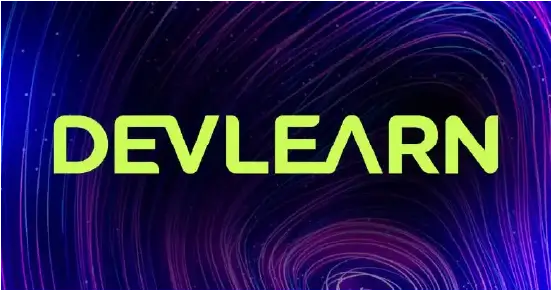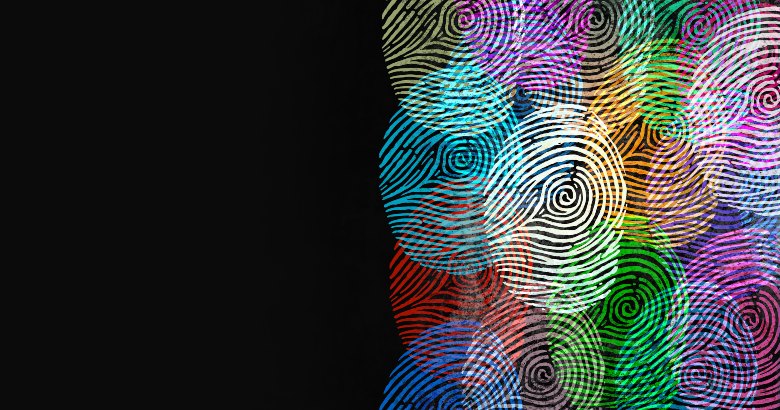Almost two years into the COVID-19 pandemic, the last several months of social and political turmoil have spotlighted bias and discrimination issues that occur not only outside of the workplace but inside as well. These include:
- A lack of a DEI (diversity, equity, and inclusion) strategy
- Leaders investing too little time creating a culture of DEI
- Inconsistent or too little communication throughout the organization about the importance of DEI
- Little to no understanding of the measurable benefit of mature DEI practices
- Lack of data to pinpoint specific organizational DEI challenges
- Failure to leverage technology to accelerate DEI maturity
These concerns have evoked a new call to order for HR and learning leaders: to lead a movement from execution of diversity compliance to building and sustaining a DEI culture characterized by respect and trust, fairness and transparency, freedom from bias, a sense of belonging, manager accountability for inclusive behaviors, as well as employee well-being and mental health.
Why DEI progress is essential
An effective DEI workplace not only ensures a moral and ethical work environment for all employees where they feel welcome despite differences (physical, spiritual, generational, ethnic, orientation, gender identity, etc.); it also promotes sensitivity to employee well-being regardless of their physical place of work (in office, at home, or a hybrid).
The COVID-19 pandemic has resulted in higher rates of depression, anxiety, stress, post-traumatic stress disorder, and burnout among employees, according to recent research from the Mental Health Index: US Worker Edition. The survey, which found that the risk of post-traumatic stress disorder is 55% higher than prior to the pandemic, also said that pandemic-fueled trauma is driving a dramatic decline in employee focus and contributing to continued worsened mental health, especially among the nation’s youngest and oldest workers.
Moreover, effective DEI practices are just good for business. For example, organizations with a diverse and inclusive workplace report 5.4 times higher employee retention and are significantly more likely to have financial returns above their industry medians. In addition, these organizations are 70% more likely to capture new markets and are 75% more likely to bring a new idea to market.
McKinsey’s 2018 study “Delivering Through Diversity” supports these findings and highlights the link between DEI and business impact. Additionally, the findings said that “companies in the bottom quartile for both gender and ethnic/cultural diversity were 29% less likely to achieve above-average profitability than were all other companies in the data set.” All data point to the essential need for today’s leaders to make DEI a top priority.
What DEI really means
DEI has been defined in many ways. For this discussion:
- Diversity is defined as the prevalence of differences in the workplace that may include race, gender, religion, sexual orientation, ethnicity, nationality, socioeconomic status, language, disability, age, generation, religious affiliation, political perspective, and even unseen differences in learning preferences, personality, and work and life experiences.
- Equity is the promotion of justice, impartiality, openness, and fairness to all employees regardless of differences.
- Inclusion recognizes and embraces differences and represents behaviors that ensure all employees feel invited and welcome. It affords every employee the opportunity to have an impact on the business.
Committing to these practices yields a highly effective DEI culture.
Build effective DEI practices
Organizations with mature DEI cultures and that are outperforming their competition are more likely to adopt the following DEI practices:
- An organizational commitment to DEI (starting at the top)
- Resolution of systemic (not individual) DEI challenges
- Use of technology (for data analytics) to accelerate DEI organizationally
Start with leaders
Leaders set the tone for organizational culture. Employees take cues from leaders and gauge leaders’ authenticity based on their actions, words, and strategies. Leaders’ mindsets and behaviors, whether positive or negative, are the examples that employees follow. If leaders model discrimination and subordination, then they can expect the same from others.
To replace an organizational system of bias, disrespect, and distrust with a DEI system, leaders can start by seeking to understand how systems of privilege and oppression (e.g., racism, sexism, ableism, ageism, ethnocentrism, classism, heterosexism, etc.) live in their current culture. After gathering these insights, leaders should explore how such discriminatory systems marginalize some employees’ and teams’ opportunities to contribute, to develop, to innovate, and to succeed, while benefiting others.
As part of that fact-finding initiative, leaders must examine their own social identities, prejudices, stereotypes, and assumptions about employees’ capabilities and fitness for jobs, acknowledge personal shortcomings, and realize how their preconceptions can preclude the creation and sustenance of a DEI culture.
Finally, to eliminate discrimination and subordination, leaders should use their personal experience to challenge the status quo and embrace the wide range of styles and voices represented in their employee population to kick start DEI by creating new systems of justice, fairness, and compassion for all—and modeling inclusive behavior always.
When leaders commit to these inclusive behaviors, employees feel celebrated and valued, comfortable, and welcome. As such, they thrive—and so does the business. It is a responsibility at all leadership levels of an organization to exemplify inclusive behaviors in order to advance DEI.
Implement systemic change
DEI is not a leader-by-leader, or person-by-person challenge. It is a systemic effort.
Achieving an effective DEI culture shaped by trust and respect requires changes hard-wired into an organization’s operations and processes. The required changes are guided by a targeted strategy that is broadly shared across the enterprise, motivates employees to embrace and participate in the changes, assesses the changes for positive impact, continuously adjusts actions to reach the desired level of DEI maturation, and advances a DEI culture.
DEI maturation is a perpetual forward push with embedded knowledge and understanding aligned with the business’s ever-evolving strategy. Deloitte describes a five-step DEI evolution process which, when followed, allows organizations to take action toward advancing DEI, not just pontificating about it. It moves organizations from a compliance mindset, through intermediate stages, to an inclusive culture.
Stepping forward takes time—months and even years of effort. Leaders should work toward wins each day recognizing that achieving a highly effective inclusive DEI culture is not a zero-sum game and doesn’t have an end.
As Deloitte’s Dan Helfrich said in an interview with Medium, “DEI is not an issue that will ever be fully resolved—there will always be work and improvement needed as our society is constantly changing and evolving … it takes intention and awareness, courage and dedication over the long-term to continuously listen, learn, and improve.”
Use technology
Technology plays a key role in the continuous movement toward effective DEI. “Technology solutions that allow employers to improve diversity, equity, and inclusion within the workplace are becoming more available every day. In fact, more than 100 solutions are in the market currently, and the DEI technology market is estimated to be worth more than $100 million,” according to Thomson Reuters.
Red Thread’s research finds that more than a quarter of those solutions focus on DEI analytics.
Here’s why: To rewire systemic processes and reset the culture from one of diversity compliance to a movement of reshaping behaviors and instilling uncompromised respect and trust among all requires:
- Identification and extraction of organizational DEI data;
- Analysis of practices related to current organizational maturity of DEI; and
- Development of a data-driven business case for DEI advancement.
DEI technology can be used to enable all three actions: to collect and analyze the data, measure and track progress, benchmark internally and externally, and to build, nurture, and advance DEI behaviors (e.g., respect, fairness, trust, belonging, transparency, openness, etc.) that promote holistic well-being and performance with measurable business outcomes.
Using technology to measure the metrics behind diversity is not a terrific challenge. The story is quite different when it comes to inclusion. “To effectively track inclusion, organizations must measure employee sentiment with a considered definition of inclusion,” HBR said in “How to Measure Inclusion in the Workplace.” The article cites Gartner research indicating that capturing employee feedback on seven key dimensions—fair treatment, integrating differences, decision-making, psychological safety, trust, belonging, and diversity—provides a reasonable barometer of the level of organizational inclusivity.
There are some dangers and limitations associated with using technology to advance DEI. Thomson Reuters identifies the following risks of which leaders should be aware:
- Implementing technology that itself may have biases due to the data sets on which the algorithms are trained or the lack of diversity among the technologists that created it
- Identifying problems and failing to act could create a potential legal for the organization
- Using technology could enable the perception that the technology will solve bias problems or disconnect the processes from other people, processes, or technology
- Use of technology could feed employee perceptions of big-brother monitoring or an over-focus on “political correctness” or “reverse-discrimination”
Overall, when we talk about a successful transformative movement to DEI, it is the combination of new technology, human behavior, and systemic change that will produce the best and lasting results and a more inclusive culture.
Who’s doing DEI well?
Schneider Electric, DHL, and Marriott are three examples of organizations with mature DEI practices and a demonstrable commitment to prioritizing DEI; with Marriott named to the DiversityInc Hall of Fame.
These three organizations have institutionalized a systemic, business-led approach to DEI and are taking bold actions to strengthen their commitment to DEI. They:
- Have increased diverse representation in leadership and other critical roles
- Hold managers and leaders accountable for inclusive behaviors
- Facilitate equality of opportunity among all employees
- Communicate frequently and consistently about the organization’s DEI commitment
- Encourage and support employees to bring forward their whole selves
- Prioritize and support employee well-being through innovative solutions
- Use technology to advance DEI in talent acquisition, employee development, and analytics
Advancing diversity, equity, and inclusion is a current reckoning in nearly all organizations and a number-one priority today for businesses and their employees—especially their leaders. While there is still a lot of work to be done, those committed to DEI will create competitive advantages for their organizations and their employees while others struggle to catch up.
Explore leadership issues with your peers
Shifting learning culture or adopting new training strategies can be an uphill climb; don’t undertake it alone. Explore the strategies and skills required to navigate the needs of today’s ever-changing workplace with your learning leadership peers.
The Learning Guild’s Learning Leaders Alliance offers a vendor-neutral global community for learning leaders who want to stay ahead of the curve and for aspiring leaders wanting to build their skillsets. The Alliance Membership package includes access to exclusive digital events and content curated for today’s modern learning leader, as well as opportunities to attend in-person learning leadership events held around the globe.









